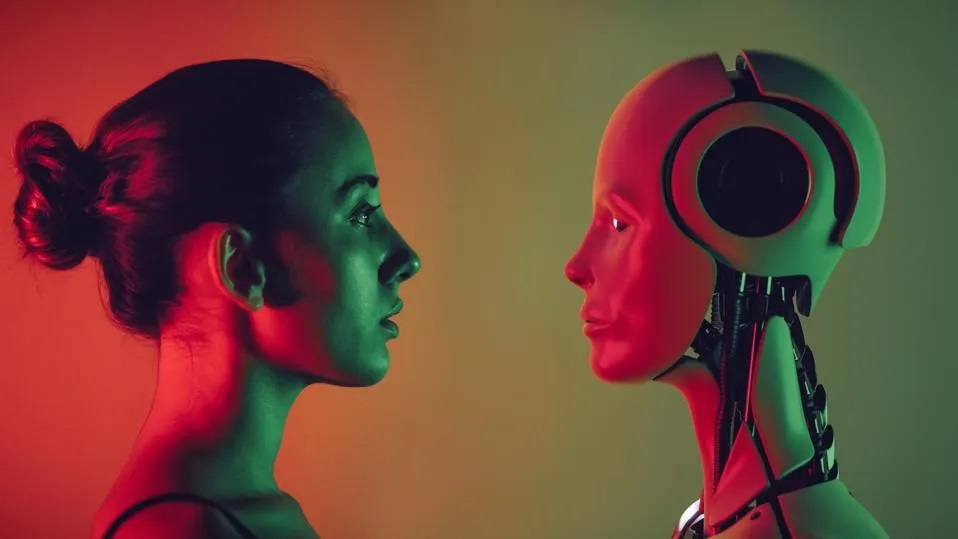Embracing humanistic AI for the common good of humanity
With the release of the free Deepseek chatbot in January 2025, another key player has jumped into the artificial intelligence (AI) arena. And this is just the beginning of the AI era. The world is thrilled!
Feb 22, 2025

By Professor Christopher Ng Kwan Hoong
With the release of the free Deepseek chatbot in January 2025, another key player has jumped into the artificial intelligence (AI) arena. And this is just the beginning of the AI era. The world is thrilled!
Major Concern: While AI is pervasive and incredibly powerful, a major concern is how to make AI behave as we want it to. For example, a powerful AI system to cure cancer might not only kill cancer cells but also kill the patient. AI might theorise that the simplest way of eliminating cancer is to kill the host! So, we are likely to face significant threats from misaligned AI.
Ethical Principles: In view of the potential risks and abuses, and based on the four principles of ethics (autonomy, justice, beneficence and non-maleficence), the European Union (EU) has set up guidelines for the ethical development of AI. Three of those guidelines state that AI should not trample on human autonomy; services provided by AI should be available to all, regardless of age, gender, race or other characteristics; and AI systems should be sustainable; i.e. they should be ecologically responsible and enhance positive social change.
Being Human: Commenting on the vital aspect of humanness, Fyodor Dostoevsky, one of the greatest novelists of world literature, stated, “The mystery of human existence lies not in just staying alive but in finding something to live for.” Such a ‘mission’ very much defines what it is like to be human – a characteristic that AI will never be able to become or take on.
One day, a humanoid robot would ask this question: “What is it to be a human?” And genius scientist Albert Einstein said that humans have values that guide our beliefs, attitudes and judgements. I think this answers the question pretty well.
Human Attributes: To assess the commonness between humans and AI, Benoit Monin and Erik Santoro of Stanford University (USA) drew up a list of 20 human attributes, 10 of which we currently share with AI: doing computations, using language, implementing rules, forecasting the future, using logic, communicating, recognizing faces, remembering things, sensing temperatures and detecting sounds.
The other 10, they thought, were traits distinctive to humans: having culture, holding beliefs, having a sense of humour, being moral, being spiritual, having desires, feeling happy, feeling love, having a personality and having relationships.
Human Concerns: As AI becomes increasingly pervasive, a survey on AI and the future of humans conducted by the Pew Research Centre noted these concerns from respondents: experience of loss of control over their lives; that AI takeover of jobs would widen economic divides, leading to social upheaval; reduction of individuals' cognitive, social and survival skills; and that AI should be directed at ‘humanness’ and common good.
Purpose of AI: Why are AI specialists building and advancing AI technology? AI is about making machines that would do intelligent tasks. There are two basic philosophies on the purpose of AI. One is to create machine intelligence that automates what humans do, and therefore, competes with humans. The other is to augment human intelligence directly or in collaboration with AI.
Collaborating and Augmenting: Touching on the ‘augment’ component, Tom Gruber, co-creator of Siri, said that humanistic AI is AI designed to meet human needs by collaborating with, and augmenting, people. (Siri is the voice-controlled personal assistant available on various Apple devices.)
Wisdom of the Heart: On the vital aspect of serving humanity, Pope Francis, in his message for the 2024 World Day of Social Communications, says that wisdom of the heart could help us “to put systems of artificial intelligence at the service of a fully human communication.”
Human Dignity & Common Good: With the growing influence of AI in every sector, the Vatican issued in January 2025 a document titled ‘Note on the Relationship Between Artificial Intelligence and Human Intelligence’ (Latin title: Antiqua et Nova). This document gives a comprehensive framework for the ethical development and use of AI. Antiqua et Nova highlights that AI applications must respect human dignity, promote the common good, and ensure that AI remains a tool to complement human intelligence.
Broader Responsibility: In Antiqua et Nova, Pope Francis emphasises the need for growth in human responsibility, values, and conscience proportionate to the growth in the potential that AI technology brings – recognizing that with an increase in human power comes a broadening of responsibility on individuals and communities.
Enhanced Humanistic AI: Considering the incredibly high stakes involved, I would like to value-enrich Gruber’s description: “Humanistic AI is AI designed to meet human needs by collaborating and augmenting people, and imbued with values for the common good of humanity”. I believe this values-based ‘definition’ is the essence of humanistic AI.
Our Response: As Christian consumers of AI, we could start looking at four key aspects:
(1) Understand the basics of humanistic AI;
(2) Appreciate the crucial role – and potential threats – of humanistic AI in our society;
(3) Promote humanistic AI to all; and
(4) incorporate the common good of humanity in undertaking research and development in the medical and other vital sectors that we are engaged in.
Note: This article was not generated by AI.
Emeritus Prof Christopher Ng is a regular contributor to the HERALD. In 2020, he received the Malaysian Merdeka Award for his outstanding scholastic achievement.







Total Comments:0